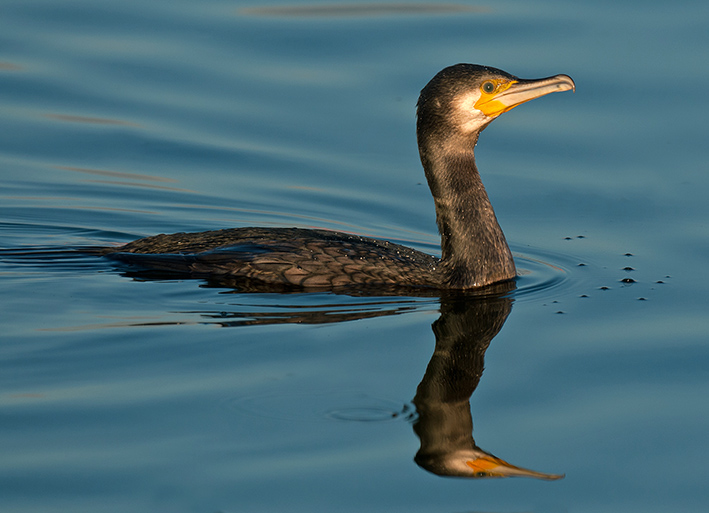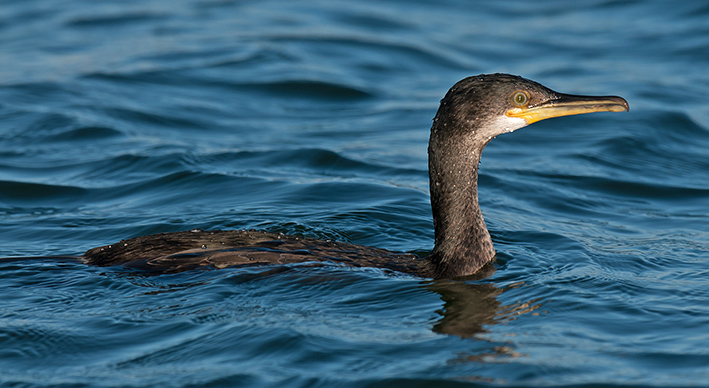With blackish-plumaged birds, identification is often reliant upon shape and size – that all-important sense of physical proportion known as feel, or more specifically ‘jizz’.
Jizz is no more important than when distinguishing between Cormorant and its more maritime congener, Shag. Cormorant will be familiar to most as the large, all-black, vaguely goose-like bird seen flying and gliding overhead between roosts and water bodies or off the coast, or perched on rafts, sticks and islands in lakes and lagoons.
Adults have a fairly long, thick neck with a kink in it and a strong bill, with a somewhat saggy belly and a fairly short stiff tail covering the feet tucked up underneath.
Winter adults can reach nearly a metre in length, and are virtually all black with a sullied large white throat patch. The head and body have a blue and green sheen, while the mantle and wing feathers are tinged with bronze.
Spring birds variably have white streaks to the head and nape, and a fairly prominent white patch above the thigh, but will already be all-dark by mid- to late summer. By this time, juveniles will also be apparent, with white underparts from the breast to the vent and streaky brown chest markings. Adults also have a yellow gular (throat) pouch and a pale grey lower mandible, a colour which can also be seen at the base of the upper mandible.
Shag is significantly smaller, shorter and more slender, and has more of a uniform glossy green sheen to its black plumage all year round. Perched adults show a fairly prominent crest, though this is not always visible and it becomes much shorter in winter plumage.
In flight, this species has a shorter, thinner and much more straight neck and thinner bill, as well as shorter, more rounded wings, leading to quicker wing-beats. Its more rounded, pot belly is apparent and the wing bases appear to be set more to the rear of the bird, unlike Cormorant’s more central position. It has no gular pouch, but does have a bright yellow gape line to the rear of the bill, which is paler in winter.
Juveniles have light underparts like Cormorant, but Shag has a a uniform brown tint to its chest and belly, with only the undertail coverts being white, and a dull yellowish bill. There is a small white throat patch, which is feathered and not bare skin.
Both species are to be seen off our coasts, Shag having a more westerly bias to its distribution, while Cormorant is by far the more likely to be seen inland. Shag does, however, turn up on the odd reservoir, particularly in winter, so the species cannot be separated merely by habitat and range, though this can be a good clue. Side by side, the difference in size and build between the two species should be apparent, but birds on their own require extra care to be taken.

Cormorant (Crosby Marina, Lancashire, 12 December 2009). Note the thick neck, ‘chunky’
head, extensive yellow bill base and gular pouch, and deep beak on this winter-plumaged
adult. Photo by Steve Young (www.birdsonfilm.com).

Shag (Crosby Marina, Lancashire, 9 December 2009). This winter-plumaged adult is a lither,
more serpentine, beast with a thinner neck and bill, and yellow restricted to the gape.
Photo by Steve Young (www.birdsonfilm.com).


